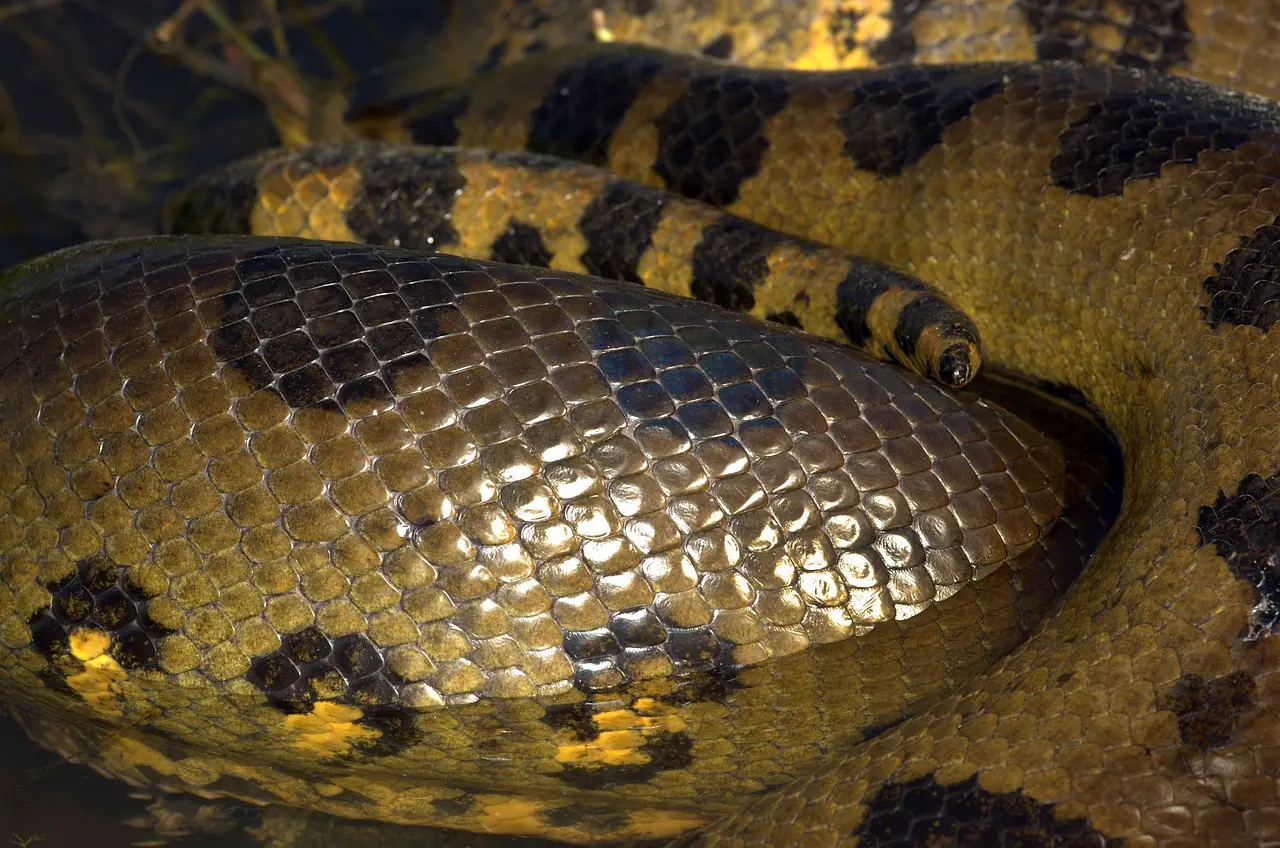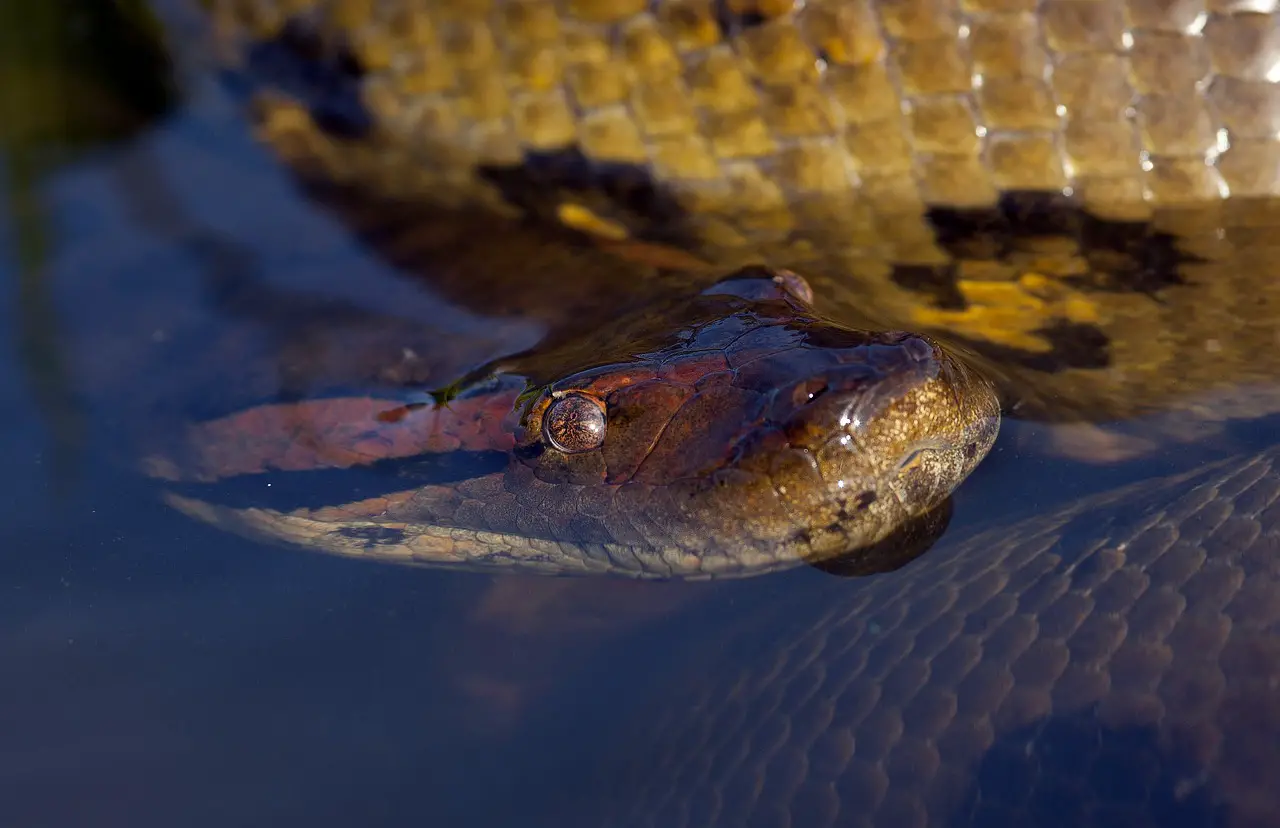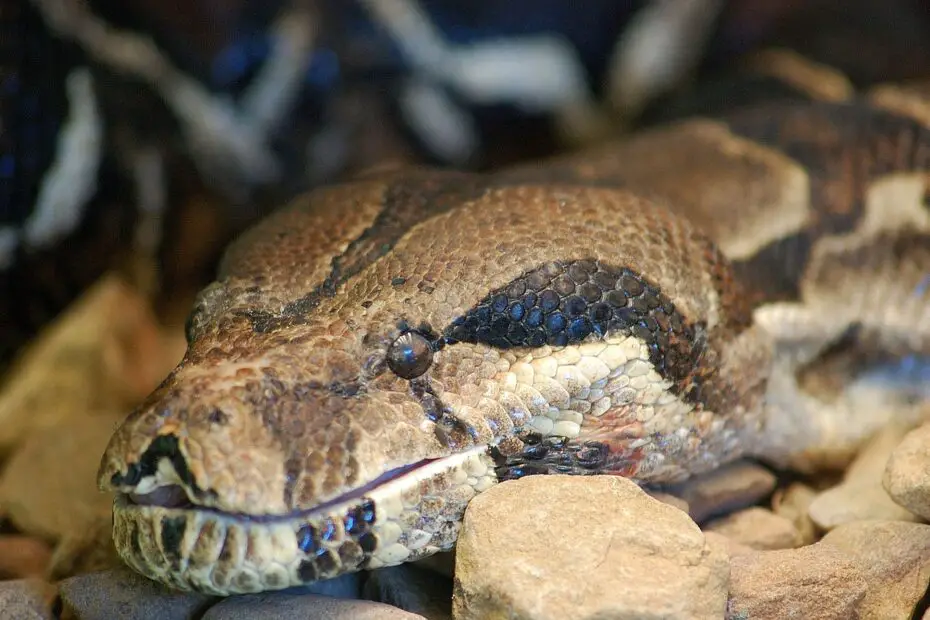The Amazon rainforest is home to some of the most awe-inspiring creatures on Earth, and among them, the anaconda reigns supreme. The biggest anacondas are legendary serpents that evoke a mix of fear, fascination, and admiration. In this article, we will delve into the world of these colossal reptiles, exploring their physical characteristics, habitat, feeding habits, behavior, and their intriguing interactions with humans.
You may also want to read about big crocodiles.
Physical Characteristics of the Biggest Anaconda
Length
The biggest anacondas are known for their incredible length, capable of reaching truly astonishing proportions. These serpents can stretch up to 30 feet or more, making them one of the longest species on the planet. Imagine encountering a creature of such immense size and power!
Weight
In addition to their impressive length, the biggest anacondas also boast remarkable weight. These giants can weigh over 550 pounds, equivalent to the weight of a small car. Such mass gives them an intimidating presence and emphasizes their position as apex predators within their ecosystem.

Diameter
Anacondas are renowned not only for their length and weight but also for their substantial girth. The thickest individuals can have a diameter of nearly 12 inches, showcasing their ability to overpower and constrict their prey with sheer strength.
Habitat and Distribution
Anacondas predominantly inhabit the lush and dense rainforests of the Amazon basin, specifically the swamps, marshes, and slow-moving rivers that crisscross this vast region. Their distribution spans countries such as Brazil, Venezuela, Colombia, and Ecuador, where they thrive in the warm and humid climates.
Feeding Habits
As formidable predators, anacondas have a voracious appetite and feed primarily on a diverse array of prey. Their diet includes fish, birds, turtles, caimans, capybaras, and even deer. With their powerful bodies and sharp teeth, anacondas are capable of ambushing and overpowering animals much larger than themselves, making them apex predators within their ecosystem.
Reproduction and Lifecycle
Anacondas are ovoviviparous, which means they give birth to live young. After a mating ritual, female anacondas retain the fertilized eggs inside their bodies, where they develop until birth. The females can give birth to a brood of up to 40 live offspring, measuring around 2 feet in length. This remarkable reproductive strategy ensures the survival of the species even in challenging environments.
Behavioral Traits
Solitary Nature
Anacondas are primarily solitary creatures, preferring a solitary existence except during the mating season. This behavior ensures a reduced risk of competition for resources within their habitats.
Hunting Techniques
Anacondas are ambush predators that use their stealth and camouflage to surprise their prey. They patiently lie in wait, blending seamlessly with their surroundings, before striking with lightning speed. Their powerful constricting coils quickly overpower their victims, suffocating them and making escape virtually impossible.
Interaction with Humans
Encounters in the Wild
Encounters between humans and anacondas in the wild are rare due to the remote locations they inhabit. However, when such encounters do occur, they often fuel local legends and folklore, perpetuating the mystique surrounding these colossal serpents.
Conservation Status
Due to habitat destruction and illegal hunting for their skin and meat, anacondas face significant conservation challenges. Several species are listed as vulnerable or endangered, making conservation efforts crucial for their survival.

Myth vs. Reality: Separating Fact from Fiction
Throughout history, anacondas have been shrouded in myths and legends. It is essential to separate fact from fiction to truly understand these fascinating creatures. Contrary to popular belief, anacondas do not grow large enough to swallow humans whole, as their jaws are not capable of stretching to accommodate such massive prey.
Famous Anaconda Sightings and Legends
Numerous tales and sightings of enormous anacondas have captured the public’s imagination over the years. One such story involved the famous “Green Anaconda” measuring over 40 feet long and weighing approximately 500 pounds. Although these accounts often lack verifiable evidence, they contribute to the mystique surrounding these colossal serpents.
Anacondas in Popular Culture
Anacondas have become icons of fear and fascination in popular culture. Movies, books, and documentaries often portray these serpents as fearsome predators, further perpetuating their larger-than-life image.
The Role of Anacondas in the Ecosystem
Anacondas play a vital role in maintaining the delicate balance of the Amazon rainforest ecosystem. As apex predators, they regulate populations of their prey species, helping to prevent overpopulation and its subsequent ecological consequences.
Conservation Efforts and Challenges
Preserving anaconda populations requires concerted conservation efforts, including habitat protection, legislation against hunting, and public awareness campaigns. These initiatives aim to safeguard these majestic serpents for future generations.
Future Prospects for Anaconda Populations
Despite the challenges they face, there is hope for the future of anacondas. Continued conservation efforts and sustainable practices can contribute to the recovery and long-term stability of these magnificent creatures.
Frequently Asked Questions (FAQs)
How long can the biggest anaconda grow?
The biggest anacondas can grow up to 30 feet or more in length, making them one of the longest species of snakes in the world.
Are anacondas dangerous to humans?
While anacondas are powerful predators, they do not pose a significant threat to humans unless provoked or cornered. They typically prefer to avoid human encounters and are not aggressive toward people.
Do anacondas swallow humans whole?
Contrary to popular myths, anacondas do not grow large enough to swallow humans whole. Their jaws are not capable of stretching to accommodate prey of that size.
What is the largest prey ever recorded for an anaconda?
Anacondas have been known to capture and constrict prey such as caimans, capybaras, and even deer. However, there are no verified records of anacondas successfully consuming prey larger than themselves.
Can anacondas be kept as pets?
Due to their size, specific care requirements, and legal restrictions, keeping anacondas as pets is highly discouraged and often illegal. They are best admired from a distance in their natural habitats.
Conclusion
The biggest anacondas are awe-inspiring creatures that command respect and fascination. From their astonishing length and weight to their hunting prowess and critical role in the Amazon rainforest ecosystem, these majestic serpents continue to captivate our imagination. By understanding and conserving anacondas, we contribute to the preservation of one of nature’s most extraordinary species.
